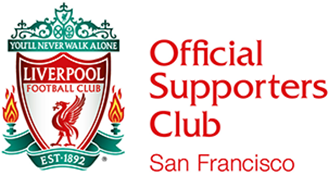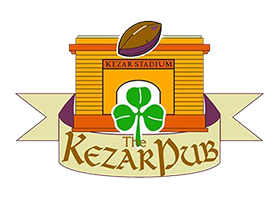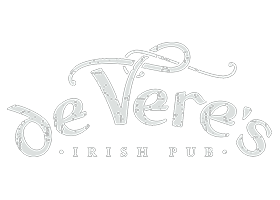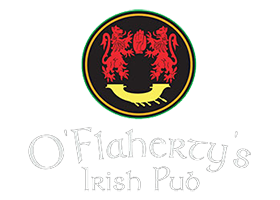Liverpool Football Club were founded in March 1892 by John Houlding, who owned the Anfield Road stadium. Everton FC were the occupants at Anfield before this date but following a disagreement with Houlding they promptly moved across Stanley Park to a new home – Goodison Park.
Houlding was left with an empty stadium and so formed Liverpool Football Club. He appointed John McKenna, an Irishman with many links in Scottish football, McKenna used his links to form a squad of 13 players, of which 9 were Scottish.
In their first season the club won the second division championship – without losing a game! The first of 18 first division championships arrived at Anfield in season 1900-01, now under the management of Tom Watson, the team finished two points ahead of Sunderland. Five years before that Liverpool recorded their highest ever League win when they beat Rotherham United 10-1 in the second division (Feb 18th 1896).
The Reds won their second league title in 1906, and reached their first FA Cup Final in 1914. The match was played at the old Crystal Palace ground and Liverpool lost 1-0 to Burnely, with ex-Evertonian Burt Freeman scoring the only goal.
In 1922 the third league title was secured and the following year the fourth was won – finishing 6 points clear. The summer of 1928 saw a new roof on the famous Kop stand at Anfield.
In 1947 another league title was won, losing just one match all season. In search of the double The Reds reached the semi-final of the FA Cup, but lost after a replay to Burnley.
1955 saw Liverpool beat Everton 4-0 in an FA Cup tie, but the manager Don Welsh could not get the club out of division two and so was replaced by Phil Taylor the following year.
Taylor had little success and was replaced by Bill Shankly in 1959. Shankly arrived from Huddersfield and went on to guide The Reds to numerous championships and cup wins.
Shankly lead the club to their first FA Cup final at their third attempt in 1965, beating Leeds United in the final. That win came was sandwiched by two more championships. European success was on the horizon and despite ending as runners-up in the European Cup Winners Cup in 1966 the bread and butter of the league title was won.
1973 was a significant year for Liverpool FC, under the leadership of Bill Shankly they won their first European honour – the UEFA Cup – and their eighth league title! Just a year later Shankly made the decision to leave the club by mutual consent – much to the shock of all the Reds adoring fans.
Bob Paisleywas promoted from the ‘bootroom’, a trend which would continue at the club for decades to come. Any doubts that Paisley was not the right man for the job were dispelled in 1976, when Paisley’s team won the league title and UEFA Cup in the same season. The next season saw the league title (again!), the European Cup and the European Super Cup all arrive at Anfield. The trophies kept coming with another European Cup in 78 and league titles in 79, 80, 82 and 83. These were won with league cups in 81, 82 and 83 and a third European Cup in 81. These successes made Bob Paisley the most successful British football manager ever.
Paisley retired at the of the 1982-83 season and made way for Joe Fagan to take charge. Fagan’s team lifted the league title, league cup and the European Cup in his first season in charge – some start to a managerial career!
Kenny Dalglish was appointed in 1985 following Fagan’s retirement and won the clubs first ever double of league title and FA Cup in 1986. Two more league championships followed in 88 and 90 along with another FA Cup win in 89.
April 15th 1989 is a date that will live long in the memory of Reds fans through out the World. Liverpool were playing Nottingham Forest in an FA Cup semi final at Sheffield’s Hillsborough Stadium. 96 Liverpool fans were tragically killed following inadequate policing and stewarding in the Leppings Lane End.
Dalglish left the club in 1991 and Graeme Souness took the helm. His first season saw The Reds lifted the FA Cup, beating Sunderland 2-0. But Souness’ reign at the club was not to be a successful one and after several failed attempts to win the league and many poor finishes, he made way for Roy Evansin 1994.
1994 also saw the last ever game in front of the Kop stand. Norwich City were the visitors as 44,339 fans packed in to Anfield. Many of them had turned out to see legends such as Paisley and Dalglish. The date of April 30th 1994 will go down in Liverpool history – but not for the result. Norwich won 1-0 courtesy of a Jeremy Goss strike at the Kop End.
Evans’ reign started in familiar fashion to Souness’ with a League Cup win in 1995. But once again the club failed to live up to expectations with miserable European campaigns and continued league inconsistencies.
In the summer of 1998 Gerard Houllier was appointed joint manager with Roy Evans. But that joint partnership was always destined to end in failure and after four months together Roy Evans left the club. Roy a great servant to the club was never a man to put himself before the club whom he supported as a boy and worked himself up from fringe player to first team manger. He later claimed in one of his last interviews that he didn’t want to be a “Ghost on the Wall” which Is in fact what his Autobiography title for his book which was published in 2004.
Houllier now sole manager had a big task on his hands to restore confidence and discipline in his players. He inherited a team who were used to Roy Evans’ “one of the boys” attitude towards management but slowly but surely he began to build a squad of players that Liverpool once again could be proud of. Players such as Paul Ince and later Robbie Fowler were shown the door as they were never going to be part of Houlliers new counter attacking and disciplined squad. In came players such as Gary McAllister, Milan Baros, Sami Hyypia, Stephane Henchoz, John Arne Riise, Emile Heskey and the inclusion of up and coming starlet Stephan Gerrard to name just a few.
Immediately things began to look a whole lot brighter and after two seasons of laying down the foundations to a team in his mold his team won three trophies in one season. The League Cup success over Birmingham was the clubs first trophy for 6 years and this was soon followed by FA Cup and UEFA Cup joy two months later. A memorable UEFA Cup Final saw Houlliers team beat Spanish underdogs Alaves 5-4 in a thrilling extra time encounter.
Success was fleeting though as growing unrest at Liverpool’s sudden return to mediocrity and little progress forced supporters to call for his resignation which 2 seasons earlier would have seemed inconceivable. Liverpool were now perceived as chronic underperformers and the league table showed it. Expensive signings such as El-Hadji Diouf and Emile Heskey to name a couple were slated as flops and Houllier later went on record as saying signing Diouf was a huge mistake.
After such hope and prosperity in his first few seasons Houllier was politely shown the door. During a pre-season full of speculation Liverpool made the massive coup in signing promising young manager Rafael Benitez from Valencia. “Rafa” as he is known faced an equally big task in bringing together a squad littered with distinctly average players from the Houllier era.
Purchases such as Luis Garcia, Xabi Alonso and Fernando Morientes improved the outlook but the loss of Michael Owen to Real Madrid marred Benitez’s opening months.
Rafa Benitez’s first season in charge saw the Reds land their first European Cup for 21 years, defeating AC Milan against the odds in one of the greatest European Finals ever witnessed. The future looked bright for the club, but little did we know that dark days lay ahead.
Rumours began circulating around fan forums as early as the Summer of 2006 that owner David Mooreswas looking to sell the club. Later that year, fan optimism soared to new heights when a deal that saw Moores selling the club to Dubai International Capital was thought to be nearing completion. DIC had completed their due-diligence and an offer of £450m was widely accepted to have been offered. However, in a startling twist, an 11th hour offer was made by George Gillett, then owner of the Montreal Canadiens, and parter Tom Hicks, then owner of the Dallas Stars hockey team and Texas Rangers baseball team, which came with offers of bonuses and “titles for life†for both Moores and Chief Executive Rick Parry. The sale of the club, at an estimated £470m, was completed on the 6th of February 2007, and was swiftly followed by a myriad of promises from the newly installed owners. Fans were told to expect “one great player†each season, along with plans for a new stadium in Stanley Park, with vows to have a “spade in the ground within 60 days.â€
Initially, the promise of top players was met. Purchases such as Fernando Torres, Javier Mascherano, and more were brought to the club with much fanfare, and while progress was evident on the pitch, stories of infighting and rising debt began to dog the back pages. Soon it became clear that the initial promises made to the club and the fans were being broken at an alarming rate. Work on the new stadium never began, the world class signings stopped arriving, and most worryingly, the debt loaded on the club – thanks to it being purchased using its own equity – skyrocketed. It was becoming clearer by the day that the owners of Liverpool Football Club had anything but its best interests at heart.
Fans of the club responded. They took to the streets in protests organized by supporters union Spirit of Shankly. Internet forums were active hives of dissent, and media campaigns focused on the damage the “two cowboys†were doing to Liverpool Football Club. Meanwhile, Benitez was sacked after a disappointing 2009-10 campaign that saw Liverpool finish in seventh position (compared to their narrowly missing out on the title the year before) and replaced by Roy Hodgson.
But Hicks and Gillett dug in their heels, continuing to barely keep the club afloat using more borrowed money, escalating to a point that saw the Royal Bank of Scotland threaten to call in its debts, which would have resulted in one of the world’s biggest sporting institutions declare bankruptcy. Infighting between the two owners (which saw some evidence of Gillett realizing the scope of the damage done, while Hicks wanted to dig in further) caused them to finally seek a sale of the club – for an astonishing £800m. The RBS intervened, and Martin Broughton was appointed chairman of the club to oversee its sale, while legal proceedings began against Hicks and Gillett to force them to relinquish control. In October of 2010, the Liverpool board voted to accept an offer from New England Sports Ventures to purchase the club for what would essentially be the cost of the debt – which had soared to over £300m, but was still far below the valuation set by Tom Hicks. The owners attempted to oust several members of the board of directors, replacing them with family members and people “loyal to Hicks and Gillett†but the move was blocked. Finally, on October 15, 2010, with Liverpool Football Club standing at the edge of a financial precipice, the sale of the club to NESV was finalized. Tom Hicks vowed to fight the sale, and brought multiple lawsuits against the club and its former officers, all ending in failure. In a subsequent interview, Hicks claimed that a “better owners than NESV†was scuppered by “internet terrorists.†and went on to famously declare himself the victim of an “epic swindle.â€
Life under the new stewards didn’t get off to the best of starts. Roy Hodgson proved to be a manager out of his depth, and his time in charge of the club came to a blissfully short end when he was sacked on the 8th of January, 2011 with the club languishing in mid table. To the delight of Liverpool fans everywhere, Kenny Dalglish took the reins in what was universally seen as the King returning to his throne. That January also saw the signing of a certain controversial striker from Uruguay, as well as the sale of the increasingly frustrated figure of Fernando Torres to rivals Chelsea, for a Premiership record £50m. However that money didn’t last in the club’s accounts for long, as a deadline day fee was agreed with Newcastle United for striker Andy Carroll, for a staggering £35m. Despite the loss of star striker Torres, Liverpool revival under Dalglish was miraculous. The club marched up the table, securing fifth spot and a Europa League place. That summer saw a massive amount of money invested in players, although it proved to be money poorly spent.
The 2011-12 season is one remembered for highs and lows. The club performed tremendously in the domestic cup competitions, winning the League Cup in February, defeating Championship side Cardiff City at Wembeley, and returned to the stadium later that year for the FA Cup final, which saw the team narrowly lose to Chelsea. But this form was starkly contrasted by their league form, which saw Liverpool finish in 8th place, their lowest finish since the Souness era, and the lowest points total by the club since the Premier League era began in 1992. Ultimately, the silverware was deemed not good enough, and after the season drew to a close, Dalglish was sacked.
Several weeks later, the appointment of Brendan Rodgers was announced, with the Irishman being awarded a three year contract. Fans were skeptical of the club hiring a young and inexperienced manager, and the start to his tenure was rocky to say the least. His first league match in charge saw the club lose heavily to West Bromwich Albion, which set the tone for the entire campaign. Poor performances in the cups followed, and when the season drew to a close, Liverpool sat in seventh position on 61 points. An improvement, but not enough for many fans. The following season saw dramatic improvement, however. The signings of Daniel Sturridge and Phillipe Coutinho proved to be inspired, and a lethal partnership between Sturridge and Luis Suarez has blossomed into one of the deadliest partnerships in the game.
But despite a season that saw the club on the brink of that elusive 19th league title, a collapse followed. Once more, the club lost top players, with Luis Suarez departing for Barcelona, and Raheem Sterling leaving on a sour note for Manchester City. Horrible performances in Europe, including a bizarre “reserve team” taking the field against Real Madrid, saw the Irishman’s time at the club come to an end. The search was on for a new manager, and this time the club got their man.
In October of 2015, Liverpool pulled off a coup that shocked the footballing world by announcing the appointment of Europe’s most sought-after manager, Jurgen Klopp. With a reputation for dynamic “heavy metal” football, and creating teams based on spirit and work he seemed like the perfect fit for the club.
As a club, we have achieved massive heights, and experienced horrible lows. The euphoria of European nights at Anfield, epic finals, and seeing the captains of our club hoist silverware over their heads is bittersweet with the memories of Hillsborough and Heysel, the fear of the future under Hicks and Gillett, and barren periods where the team searched for an identity. But one thing has remained true, that at the end of the storm, there has always been a golden sky. No matter what the obstacle, Liverpool Football Club has always emerged at the other side, carried by the Kop, buoyed by our history and passion.
